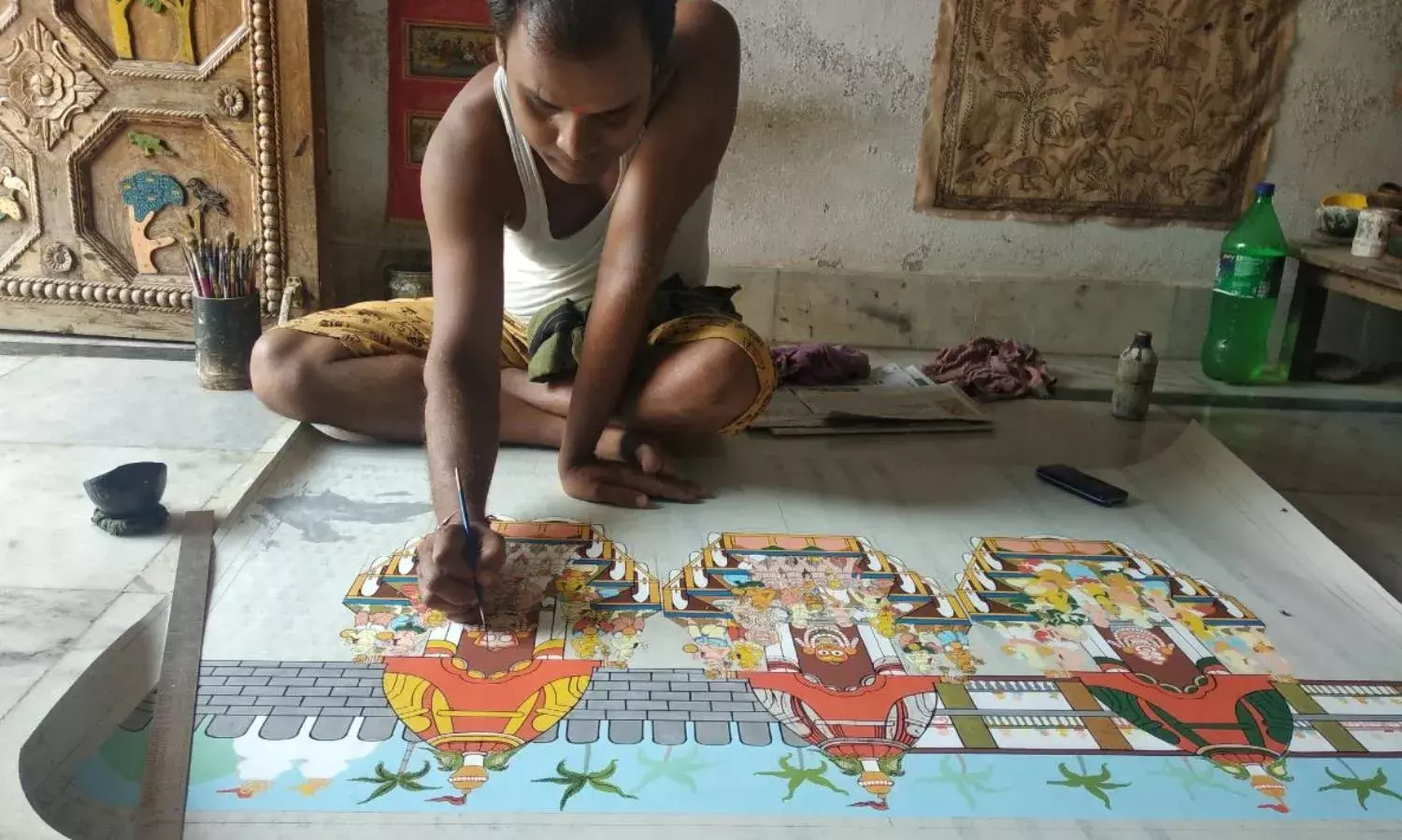Lockdown Has Broken the Backs of Pattachitra Artists in Odisha
‘The fate of artists and artisans in our village is now at stake’

For around 160 Pattachitra artisan families in Raghurajpur, Puri district, Odisha, the lockdown has broken their backs.
Raghurajpur is a heritage crafts village, known for its master Pattachitra painters, an art form said to date back to 5 BCE.
The region is also known for its Gotipua dance troupes, the precursor to the Odissi classical dance form.
The village is also home to artists and craftspersons of palm leaf engravings, stone and wood carvings, wood and cowdung crafts, and masks.
Around five to seven members of a family paint patachitras and other craft items.
“The fate of artists and artisans in our village is now at stake. The union and state governments recently announced an economic package to cope with the outbreak of COVID-19. But craftspersons are not covered at all in these packages,” says Biswanath Swain, president of the Raghurajpur Craft Village Committee.
He shows the pattachitras and other craft items stocked in his house. Almost all the families of Raghurajpur paint patachitra inside their homes.
Jagannath Mohapatra, another artist, says “Our village, best known for patachitra painting, is estimated to have taken a hit of at least ₹50 lakh already, after more than 20 days of lockdown. The losses could deepen further with the state government extending the lockdown up to 30 April.”
“Many people, especially tourists, purchase patachitras and other craft items created by the people of Raghurajpur. But the lockdown forced them to postpone their visits to our village. As a result we are now in distress,” says Chandrashekhar Swain, another artist.
“We suffered a huge loss during Cyclone Fani last year, and now the coronavirus lockdown is pushing us closer to the edge,” he explains.
A painter takes 6 to 12 hours to paint a pattachitra, which can fetch them between ₹500 and 5000. Now the coronavirus has forced many artists to stop their work.
Brunadaban Swain, another patachitra artist, says “This COVID-19 poured cold water on our work, as most of the artisans are reluctant to paint patachitras now. As a result a sepulchral silence reigns in Raghurajpur.”
“This age-old occupation has been a source of our livelihood since the time of our ancestors. Now we are suffering a lot,” says Gourang Das, while painting inside his home.
The pattachitras they make year round are sold during festivals. Many tourists, particularly overseas tourists, also visit Raghurajpur to purchase patachitras.
“But the lockdown forced everybody to remain inside – as a result we are now in deep trouble. What kind of catastrophe did the coronavirus bring about?” asks Pradipta Das, another artist.
Pattachitra paintings are made on a piece of cloth known as patta, or a dried palm leaf, which is first covered with a mixture of chalk and gum.
Over the prepared surface, colourful and intricate pictures of various Gods, Goddesses, and mythological scenes with flowers, trees and animals are then painted.
Pattachitra is an important part of the handicrafts and cottage industry in the state, and is known for its unmatched range of works intrinsic to the tradition.
“This is the only village in India where each family is engaged in one craft or another. Now they are struggling to survive. We hope that after the lockdown ends they will get more customers to sell their craft items,” says Ratikanta Patnaik, an officer in the tourism department of the Odisha state government.



